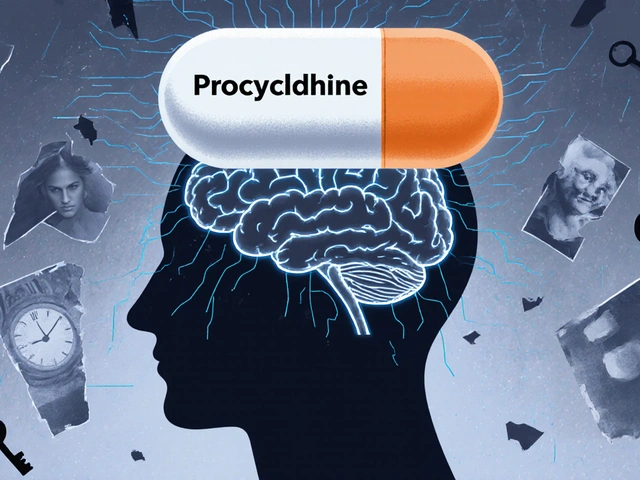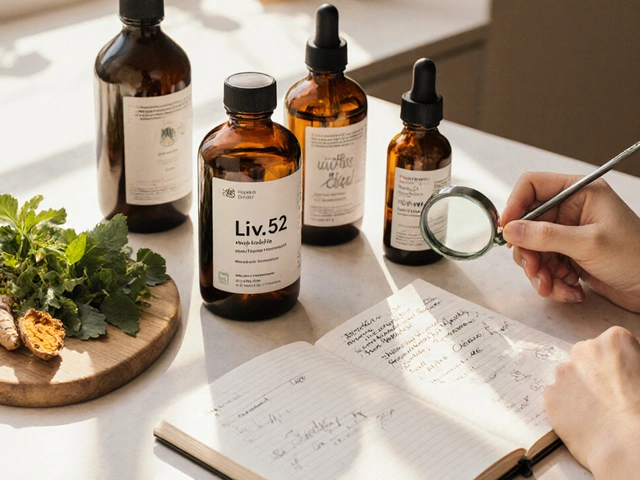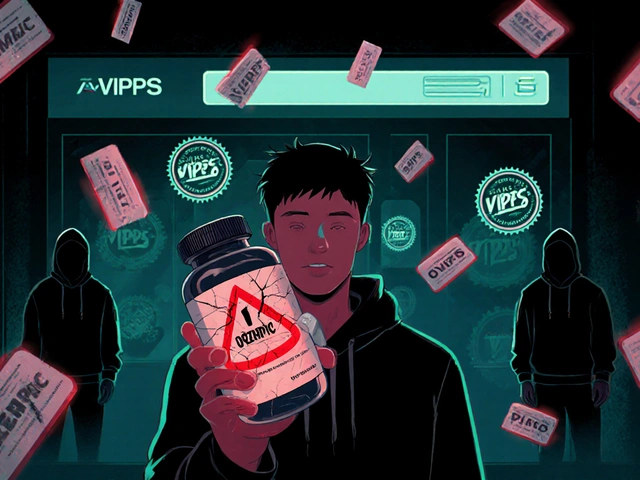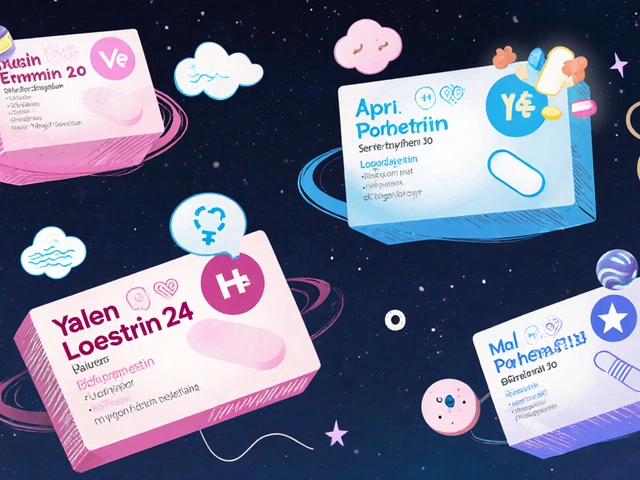Sticker shock is real when you glance at the pharmacy receipt—especially with something as crucial as anastrozole, a go-to for hormone-positive breast cancer. You’d think a generic would be a bargain, right? Not always. While some pay under $15 a month, others fork out $100 or more. It seems random, but there’s an entire system behind what you pay, and knowing how to work that system can put a lot back in your pocket. Why such a gap? Let’s break it down.
Understanding Anastrozole Pricing and What Sets Your Cost
Jumping into the maze of medication pricing, anastrozole can feel like a wild card. It’s a generic, yet prices dance all over the board. According to GoodRx, anastrozole’s average retail price hovers around $110–$140 without insurance, but most manage to pay far less thanks to insurance or discount cards. What actually sets your cost? First, pharmacy chains negotiate prices differently. CVS might offer it at $20 with a savings card or copay card, while at a small local pharmacy, the price tag could be three times that.
Your insurance is a major player. Some plans cover anastrozole as a preferred generic; you could owe a small copay—often $10 to $30 for a 30-day supply. If your insurance tucks it in a higher tier or makes you meet a deductible first, the cost rises fast. In rare cases, you might have to pay full retail until you hit an annual deductible—a nasty surprise.
Medicare brings its own drama. Original Medicare doesn’t cover outpatient prescriptions, leaving you hunting for an extra Part D plan. According to AARP, average Part D plans may charge $0 to $40 monthly for anastrozole, but some seniors are stunned when they fall into the “donut hole,” where coverage drops and out-of-pocket costs spike. By late 2024, the Medicare Part D donut hole costs about 25% of the drug’s price until you enter catastrophic coverage later in the year.
Here's a quick breakdown of typical anastrozole costs:
| Source | 30-Day Cost (USD) |
|---|---|
| Without Insurance (Retail Avg.) | $110-$140 |
| With Generic Discount Card | $9-$30 |
| Medicare Part D Copay | $0-$40 |
| Commercial Insurance Copay | $10-$40 |
| Assistance Programs | $0-$20 |
Don’t assume every pharmacy has the same deal. I’ve heard from more than a few women who saved $100 a month just by switching chains or even paying cash instead of using their insurance. Yes, sometimes a straight-up coupon is cheaper than your copay. Weird? Completely, but worth checking.
You might see big differences if you’re using a specialty pharmacy versus a retail pharmacy. Some specialty locations tack on high “handling” fees, which can hike your price for no good reason. Always ask if there’s a non-specialty pharmacy option.
There’s also the factor of manufacturer pricing and middlemen. Pharmacy benefit managers (PBMs) negotiate bulk prices behind closed doors, and those savings don’t always trickle down to you—the patient. Even with a generic, the supply chain takes many bites out of the apple, so the sticker price at the counter can feel random.
Supply chain hiccups can mess with prices too. In early 2025, a brief manufacturing delay bumped anastrozole prices up about 12% nationwide for a few weeks. When supply is tight, retailers mark up to manage stock, so don’t be shy about asking if prices might drop back again next month.
Don’t overlook state regulations. In California, pharmaceutical benefit laws cap how much profit pharmacies can add for many generics, so patients in Sacramento might get a better deal than those in Florida.
If you want to geek out over pharmacy pricing games, check out the 2024 Medicare Rights Center report, which called out "wild price swings among the same medications at different pharmacies, even within a few blocks of one another." No joke.
This leads to the big takeaway: always price shop, even with something as routine as anastrozole, because the price difference could cover a week’s groceries.

Getting Financial Help: Assistance Programs and Savings Tips
No one should have to choose between life-saving meds and basic needs, but it happens way too often. Thankfully, there are options to shrink that pharmacy bill. Even if you’re not low income, you might qualify for help you didn’t know about. Let’s run through what’s really out there.
First stop: patient assistance programs (PAPs). AstraZeneca, the original manufacturer, runs the AZ&Me Prescription Savings Program. If your household income is less than $45,000 for a single person (higher for families), you could get anastrozole cost covered 100%, no copay, for a year at a time. The application isn’t too scary, and they’ll call to walk you through it if you get stuck. Even if you’re on Medicare or VA benefits, you can apply—worth checking if your coverage is thin.
A bunch of other national nonprofits step up for those stuck in the "donut hole" or with epic deductibles. The HealthWell Foundation, PAN Foundation, and CancerCare provide copay grants (sometimes up to $4000 a year) for breast cancer meds, even if you’re insured. Just know: these programs run out of funds every so often, so it pays to check monthly if you get denied once.
Medication discount cards and pharmacy savings programs help almost everyone. GoodRx, SingleCare, and WellRx offer web and app coupons that often bring anastrozole under $20—even cash pay. Walgreens Prescription Savings Club has knocked people’s costs down to $10 for a 30-day supply, no insurance needed, just a small annual membership fee. CVS has a similar plan.
Hands down, independent pharmacies often go the extra mile to help you game the system. They may know local hospital charity programs, or they’ll simply match the lowest local price to keep your business—not something you’ll get at the megachains.
Got insurance but the copay is huge? Call your plan and ask for a review or “tier exception.” If your prescriber sends a note saying anastrozole is medically necessary and the only suitable med for you, your plan might drop it to a lower copay tier. This move works more often than you’d expect—insurers hate the paperwork, so sometimes just asking does the trick.
If you run into a flat-out denial, check if your state has a pharmaceutical assistance program for seniors or the disabled. These often pile on extra coverage to knock your copay down to almost nothing.
Generics are still the hero here—no need to pay for Aromasin or Femara (brand names) unless your doctor insists. If your pharmacist swaps brands, double-check with your doc, but usually, the savings outweigh any minor pill-shape changes.
- Apply to assistance programs early—approvals can take a few weeks, but coverage often lasts for a year or more.
- Make note of grant deadlines—some refill on the first of the month, and funds go fast.
- Try multiple savings cards and price them all online before hitting the pharmacy.
- Ask if there’s a 90-day fill option. Many insurance plans give extra savings if you order three months at once.
- Never ignore a high bill—there’s almost always a program or workaround if you dig deeper.
One more insider tip: hospital social workers are medical cost ninjas. Even for outpatients, they know the ins and outs of applying for charity programs, negotiating bills, and often have a “Plan B” you wouldn’t find on Google. Even if you get your meds at a neighborhood drugstore, call your local cancer center and ask to speak with a patient navigator or social worker—the help they offer could be game-changing.
For proof, here’s a line from a 2024 Susan G. Komen foundation advisor:
“Most women qualify for at least one financial support program, but don’t realize how easy it is to apply. We encourage patients to call and ask—they’re free to use and can knock the cost down to zero.”

Making Your Insurance Work Better for You
Insurance should make things easier, right? If only it worked like that every time. But if you know a handful of tricks, you can cut your out-of-pocket more than you’d think. The secret? It’s about knowing your plan’s tiers, copays, coverage rules, and how to push back politely without losing your mind.
First off: every insurance plan is different. Some treat anastrozole as first-line, some put it in a pricey specialty tier out of habit—even though it’s generic. Flip to your plan’s “formulary”—basically, the master drug list—and search for anastrozole. If it’s not at the lowest tier or your cost is over $30 for a month, call your plan’s helpline and ask for a “formulary exception.” Physicians can submit a one-page form arguing that you need anastrozole (and can’t tolerate the alternatives). It sounds time-consuming, but approvals can happen fast, especially if your doctor’s office helps you with the paperwork.
If you’re on Medicare Part D, try searching for plans with the lowest tier for anastrozole each year during open enrollment. Plans shift their formularies every year—don’t assume what worked last year will be best in 2025. The Medicare.gov plan finder lets you enter your meds and compare estimated out-of-pocket costs, a lifesaver if you’re trying to budget monthly expenses.
If you end up in the coverage gap or “donut hole,” remember you’re now responsible for 25% of the retail price, which could be about $30–$35 a month for anastrozole. Once you hit catastrophic coverage (after spending around $3,300 out-of-pocket in 2025), your cost drops to about $8 per month. Track the math closely, because once you’re in catastrophic territory, relief is finally in sight.
If your insurance won’t budge, you don’t have to accept it. File an appeal with supporting documents from your doctor or pharmacist. The National Patient Advocate Foundation reports that about 60% of insurance appeals on formulary exceptions for breast cancer meds had at least partial success in 2024—way better odds than most people assume.
Here’s what to keep handy:
- Your insurance card and plan documents
- Physician notes or prior authorization forms
- Any denial letters, so you can reference specific policy reasons
- Pharmacy receipts showing what you’ve already paid
Don’t forget, you can combine savings: insurance covers one chunk, and then you use a copay assistance program to zap the rest. Some plans make you file for reimbursement yourself; others handle the paperwork behind the scenes. And if you switch insurance mid-year, save every scrap of documentation about drug costs, because you might qualify for special coverage during the transition.
High-deductible plans add another wrinkle. You might pay full price until you hit your deductible, but once that’s cleared, your cost plummets—so bigger fills (like 90 days at a time) can chip away at that deductible faster. If your pharmacy tells you the cost is “X” but it doesn’t match what you expect from your plan, ask for a “test claim”—sometimes one keystroke fixes a pricing error that would have cost you hundreds.
For folks who want to future-proof their spending: keep an eye on the Inflation Reduction Act. It’s gradually capping out-of-pocket costs in Medicare Part D plans for many common meds, anastrozole included. As of summer 2025, the annual Part D out-of-pocket max is $2,000, and by 2026, it’ll shrink even further. Once that kicks in, you won’t face an endless pharmacy bill each year.
Here’s a bit of hope for the future: advocacy groups are lobbying for wider coverage of generic cancer meds and better transparency about insurer formulas. They’re not there yet, but pressure is mounting. Stay tuned—and in the meantime, call, ask, appeal, and look for new programs every six months. Medication pricing changes constantly, and what wasn’t covered last year might now save you hundreds.
The real trick? Don’t settle for sticker price. You have options—sometimes it just takes a little digging, a couple of extra phone calls, or asking your care team for help. And with the savings, go treat yourself to something just for you, because honestly, you’ve earned it.






farhiya jama
23 July, 2025 . 10:04 AM
I just cried reading this. My mom’s on anastrozole and we paid $127 last month at Walgreens. Then I found a GoodRx card that cut it to $18. I felt like a genius… and then guilty for not trying sooner.
DENIS GOLD
24 July, 2025 . 20:00 PM
LMAO so the American healthcare system is still a dumpster fire? Who knew? 😂
Ifeoma Ezeokoli
25 July, 2025 . 11:43 AM
Y’all in the US are surviving on coupons and prayers? 😭 I’m from Nigeria-we don’t even have consistent access to generics. I just want to say: if you’re reading this and you’re paying under $30? You’re winning. I’m sending virtual hugs and prayers to every woman reading this. You’re not alone. Keep fighting. And if you can, help someone else find the card, the program, the pharmacist who cares. We rise by lifting each other.
Daniel Rod
25 July, 2025 . 23:23 PM
It’s wild how something so life-sustaining can be treated like a luxury item. 🤔 We treat cars and phones like essentials, but when it comes to your body? Suddenly it’s ‘market dynamics.’ I keep thinking-what if this was insulin? We’d riot. Why is breast cancer med pricing any different? We’re all just humans trying not to die while being nickel-and-dimed by middlemen who’ve never held a pill in their hands. 🫂
gina rodriguez
26 July, 2025 . 19:25 PM
Thank you for this. I shared it with my sister who just started treatment. She was terrified of the cost. Now she’s calling her social worker tomorrow. You’re helping people more than you know 💛
Sue Barnes
27 July, 2025 . 20:19 PM
If you’re paying more than $15, you’re doing it wrong. Stop being lazy. Just use GoodRx. Every. Single. Time. If you’re still over $30, you didn’t try hard enough.
Barbara McClelland
27 July, 2025 . 22:51 PM
OMG I just applied for the AZ&Me program after reading this-I got approved in 48 hours and now I’m paying $0! 🎉 Seriously, if you’re on Medicare or have insurance but still getting hit with high copays: DO NOT GIVE UP. Call your oncology nurse, call your pharmacist, call your local cancer center. Someone knows a trick. I didn’t know about hospital social workers until my friend told me-and they helped me get $800/month saved. You’ve got this. 💪
Alexander Levin
29 July, 2025 . 06:15 AM
PBMs are secretly running the whole thing. 😏 The government knows. Pharma knows. You don’t. That’s why your $15 coupon is still $110 on the shelf. It’s not a glitch-it’s a feature. 🤫💊